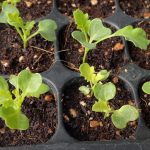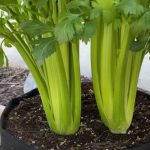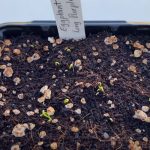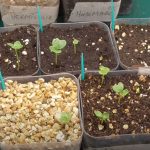Want to know the best method of growing lettuce from seed indoors? You are at the right place! Lettuce is a cool-season crop and generally prefers moderate cold. Most even refuse to germinate in hot weather. So knowing this vegetable growing condition and the best sowing season will make your indoor crop thrive!
Learn all the tricks I pick up while planting lettuce indoors, and you shall succeed!
Overview
Level of difficulty: Beginner-friendly if grown in traditional style, intermediate when grown in a hydroponic system
Nutrition: Lettuce doesn’t contain high nutrient levels, but some significant components found in this vegetable are vitamins A, K, and B9. Eating lettuce helps improve bone health and vision. Also, the main component of lettuce is water, so recuperate hydration is one of itsbenefits.
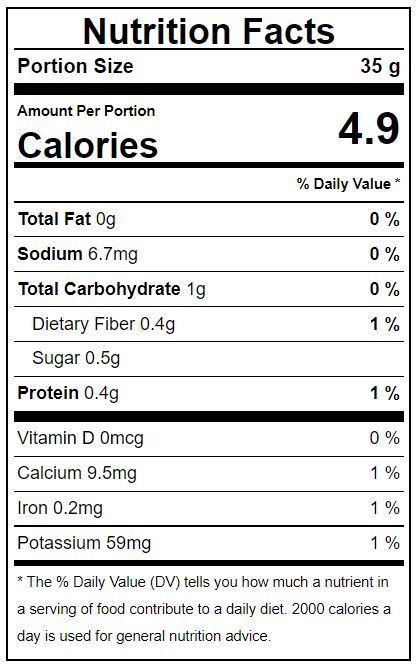
Height: Depending on the varieties and the time you allow the plants to grow, lettuce can develop fully from 10 to 40 inches.
Time to mature: Lettucestake 60 to 80 days to fully grow in soil.
Best time to sow: Lettuce can be grown all year round, so you can sow the seeds whenever you see fit. This vegetable is a cool-season crop, so it’s best to grow it in early spring or fall when the temperature has cooled down. During winter, some cold-hardy varieties can thrive without any problem, but most will require hands-on intervention to prevent prolonged exposure to cold.
Lifespan: Lettuce take about 80 days to develop leaves large enough for consumption, but gardeners may prolong the lifespan of the crop and harvest multiple times by cutting the mature leaves, leaving the nodes, stems, and young leaves. It’s possible to gather 3-4 more times, extending the lifespan of your lettuce crop.
Tips For Choosing Lettuce Cultivars
There are 4 major types of lettuce to choose:
- Romaine lettuce: Arguably the best type of lettuce to grow since it withstands a broader range of temperatures, both hot and cold. Romaine lettuce also has a crisp texture and bolts slower.
- Butterhead: Butterhead lettuce has a soft texture that makes it perfect for wraps, but most varieties bolt earlier than romaine lettuce. Though, it’s possible to pick out hybrids with longer maturing time, such as Bronze Mignonette and Buttercrunch.
- Looseleaf lettuce: This variety is half crispy, half soft, with a mild flavor. It takes only around 45 days to mature and is quite heat-tolerant. I recommend this lettuce if you want a hardy and easy-to-grow crop.
- Crisphead or iceberg: Crisphead lettuce is… very crispy, which is the most attractive trait of this lettuce type. Unfortunately, it is also the hardest to grow as it bolts quicker, is less heat-tolerant, and matures longer than the other 3 (mostly 80 days).
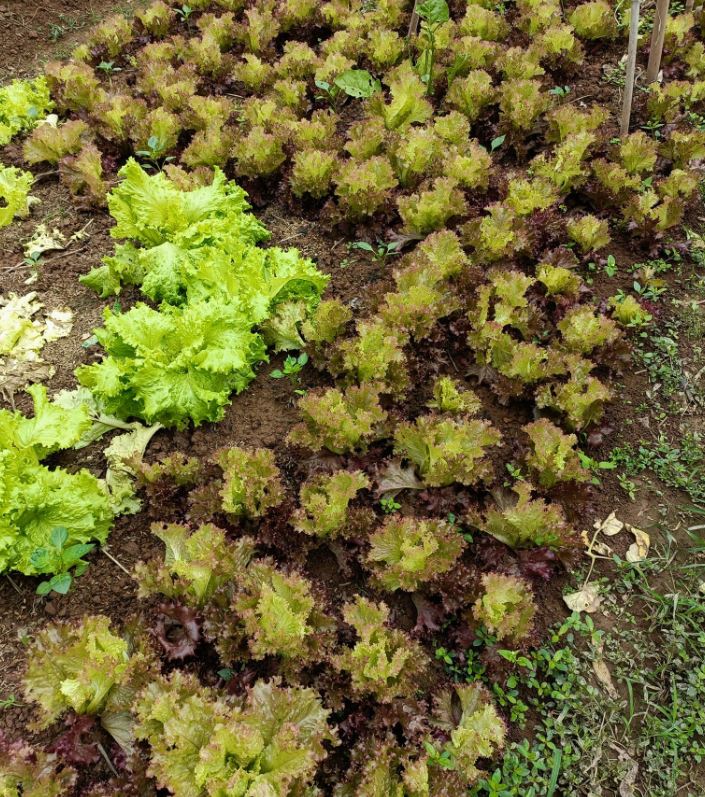
Overall, if you are a beginner, I seriously suggest starting with leaf lettuces first instead of head lettuces. The former is easier to grow indoors from seed and doesn’t have as strict living conditions requirements as the latter. You can even try the hydroponic method without any trouble.
Preparation
Growing in water:
- Net pots for hydroponic
- 15 – 20 gallon hi-rise storage bins or hydroponic trays with no drainage holes and a flat lid
- Rockwool cubes
Growing in soil:
- Cell flats with drainage holes
- Well-drained soil with coconut coir, compost, loam
- Pots in 10-inch-mouth diameter
Guide ToGrowing Lettuce From Seed Indoors: Hydroponics And Traditional Farming
There are 2 common methods of growing lettuce: traditional farming and hydroponics. Adapt whatever techniques you find more suitable for your home, and learn the steps here!
Germination
For hydroponic crops:
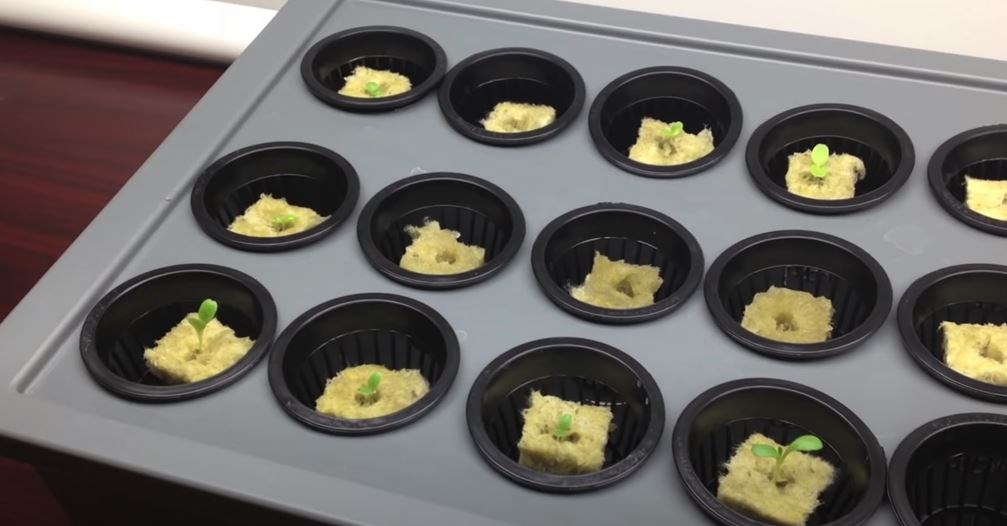
Step 1: Prepare your container. Whether you use a storage bin or a raised hydroponic tray with lids, you still need to drill large holes in the lids, large enough to hold the small net pots you prepared. Each 15 gallons container may germinate 10 seeds.
Step 2: Wet the rockwool cubes in water for 10 minutes so that they expand and are 100% damp
Step 3: Place the lettuce seeds inside the small holes in each rockwool cube, and place each cube inside one net pot
Step 4: Fill the container with water and position the net pots into their slots. Ensure the seeds aren’t drowned in water, but the rockwool cubes should touch the water. Provide the seeds with 6 hours of natural sunlight or a gardening lamp every day.
Step 5: Wait for 7 days, and you should see viable and inviable seeds. Those that are viable will have grown into tiny sprouts. When the sprouts are taller than 2 inches, prepare for transplanting into another container with a more separated population density.
For traditional farming style:

Step 1: Mix your own well-drained soil blend using the suggested materials, or purchase a potting mix with soil.
Step 2: Fill the cell flats with the prepared soil and create a small hole in the middle no deeper than ½ inch. Each hole equals one seed.
Step 3: Sow the seeds into their starting home, cover them in a light layer of soil, and lightly water them so the dirt sticks to the seeds without drowning them.
Step 4: Set up the indoor lamp system for plants or move the container to your windowsill so the seeds can access light daily.
Step 5: Wait for 4-7 days, and you should see viable seeds. Remove those that don’t germinate and prepare for transplanting the sprouts into larger pots.
Transplanting to soil or water
For hydroponic crops:
Step 1: Drill large holes in another container’s lid. For every 20-gallon container, you can grow up to 4 lettuces. You don’t have to change the rockwool cubes used to germinate the seeds from the beginning.
Step 2: Transplant the net pots with the viable seeds into the new container and fill it with water. The water should keep the rockwool cubes wet at all times. The entire root system should be submerged under water, and the leaves should be out of it.
Step 3: Mix soluble nutrients into the water when the plants reach 2 – 4 inches tall. You can use water-soluble fertilizers with NPK ratio of 5-18-20 or 5-15-36 as frequently as once every 2 weeks.
Step 4: Keep up with the watering schedule and daily light supply. It’s normal to fill the container twice a week if the root systems are well-developed, but you must monitor the water level every other day.

For traditional farming style:
Step 1: Prepare bigger pots with the same soil type you prepare for seed germination, and dig a small hole that fits the young plants.
Step 2: Transplant the seedlings with the old soil into the holes and water well so that the 2 patches of dirt merge together.
Step 3: Water, fertilize with a balanced NPK ratio, and provide sunlight regularly.
Harvest
Growing lettuces in hydroponics will likely deliver mature plants faster than those grown in soil. So it’s possible that you can harvest after 40-45 days. Lettuces grown in soil may take 60-80 days to mature, but it can be faster if you choose a quick-maturing cultivar. Remove the entire plants for consumption, or leave the scraps to regrow leaves from them!
This way of regrowing lettuce from scrap is 100% possible. If you have a lettuce scrap with no young or mature leaves, but the stem is still intact, submerge it under water or in soil and allow it to sit in it for days with constant moisture. Roots will grow from under the stem, and new leaves will emerge.
It’s better to regrow in water than soil because I find it much quicker and cleaner.
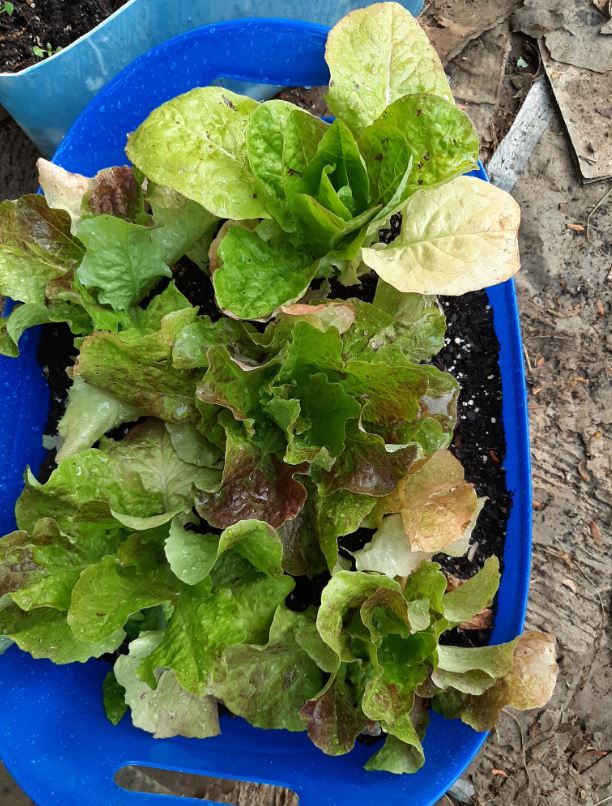
How To Care For Lettuce From A To Z
You need to learn how to provide the best living conditions for your lettuce manually! I guarantee you will be able to enjoy the results after 80 days of growing.
Light
Lettuce is very easy-going in this aspect as it only needs half-day sun to grow and can even tolerate shades. In fact, if exposed to full sun on hot days for too long, lettuces wilt and become inconsumable. Therefore, growing them indoors is actually a good idea. Place the pot next on a window sill with access to direct sunlight in the morning and shade in the afternoon.
If not, you can use an artificial sunlight lamp to trigger photosynthesis and helps your lettuce become taller. 4 to 6 hours of exposure to artificial light will keep your plants healthy.
Temperature
As you already know, lettuce plants grow the best in cool temperatures between 60 to 65oF. It’s not easy to maintain a constantly cool temperature, so I heavily advise sowing and caring for your crops in early spring or early fall when the weather is naturally fresh so that there isn’t too much hands-on temperature adjustment involved.
Is it not possible to grow lettuce in summer, then? Summer falls in the months of June, July, and August. The heat fronts are aggressive and may cause the plants to bolt and become inconsumable. But that doesn’t mean it’s impossible, especially when we have an indoor system to control the living condition. If you leave the pots of lettuce in a corner where heat doesn’t reach, it’s 100% possible to sow and harvest all year round.
Humidity/ water
Lettuce loves water, which explains why 96% of its content is this, but that doesn’t mean that the species enjoy deep watering. Due to the short root system, this vegetable can’t access water deep in the soil and can’t handle drought stress or the lack of water either. That’s why watering your lettuce frequently but with control is crucial.
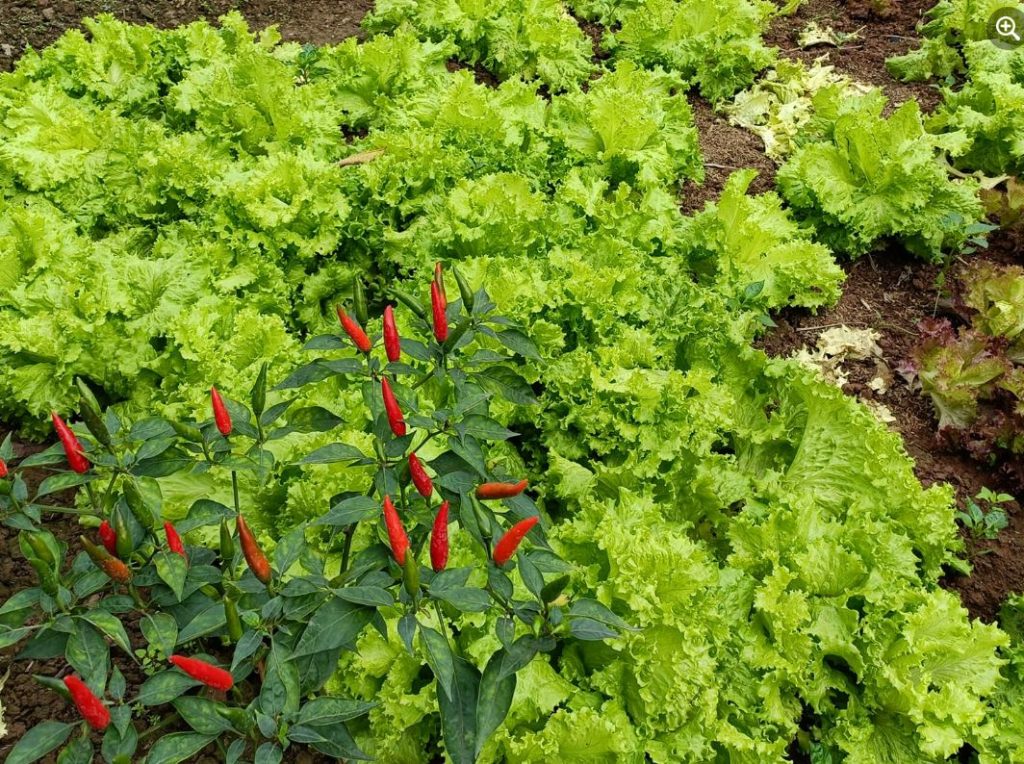
I suggest watering lettuce after 2-3 days or checking the first inch of soil and water whenever it’s dry. Remember that the watering schedule depends on the season when you sow the seeds and when the plants thrive. If it’s getting hotter, providing moisture more frequently is necessary.
Also, avoiding splashback is recommended because it causes common diseases like leaf rot and blight. If you can’t install a drip irrigation system, which is the most beneficial for plants like lettuce, try watering the soil directly. The leaves receive plenty of moisture from the soil and shouldn’t be exposed to too much water hands-on.
Oxygen
Every plant needs oxygen to grow, even during the germination period when the oxygen level is low. That’s why you must plant your lettuce in porous, well-drained, and proper water retention. But since the root of lettuce is short, you don’t need to prepare a deep pot with lots of soil. Just make sure that there is compost to loosen up the texture and loam to retain the water sufficiently.
Fertilizer
We all know that the parts of lettuce we consume are all the leaves and stems, but their development relies on the nutrients from the roots. So it’s recommended to pick fertilizers rich in all components with a balanced ratio of NPK to simultaneously support leaves, stems, and roots growth. You can use 10-10-10 or 12-12-12 fertilizers to give your traditional crops a boost of nutrients!
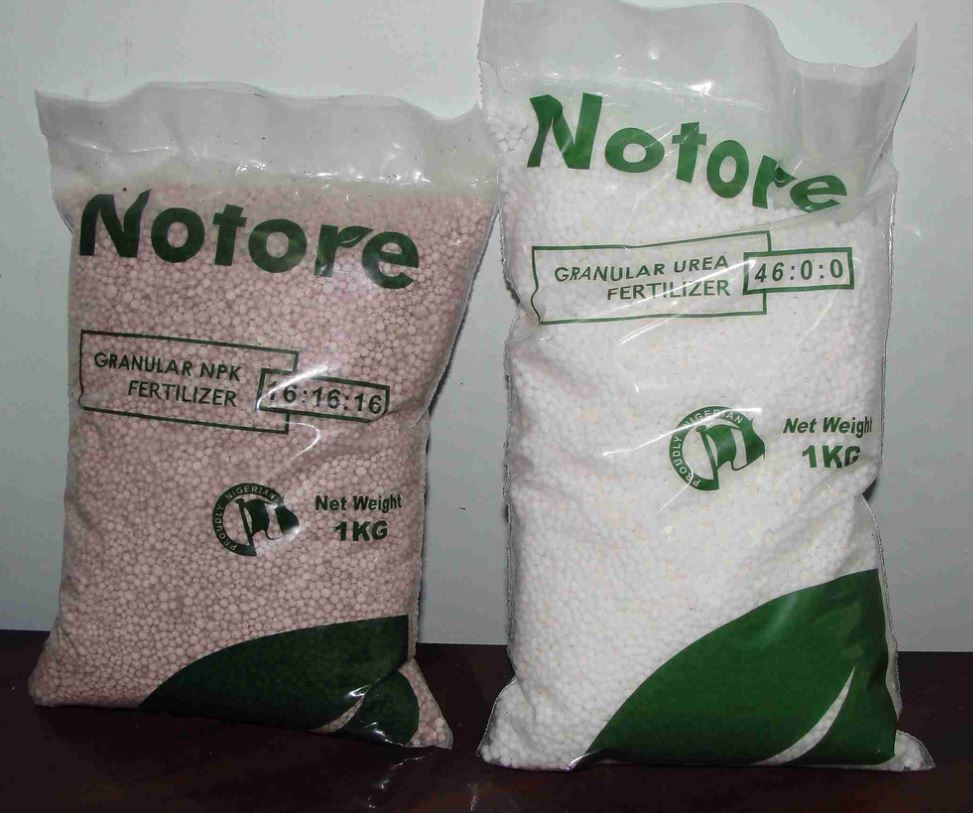
On the other hand, hydroponic crops require higher P and K, so you need to purchase fertilizers with a ratio of 5-18-20, 5-15-36, or 5-10-15.
How do we distribute fertilizer?
If you grow lettuce in pots, try diluted granular or liquid fertilizers. Mix 1 tablespoon with 128oz (3 liters) of water if you are using liquid type. Or distribute ½ to 1 teaspoon of granular fertilizer on top of the soil around your potted plants. Remember to water lightly after using granular type to merge the nutrients into the soil.
If you grow lettuce in a hydroponic system, mix 1 teaspoon with every gallon of water you use and submerge the roots of the lettuce in the solution.
How to prune your lettuce
If you want to enjoy your lettuce crops for a longer time, cutting the mature leaves is possible, leaving only the stems, nodes, and young leaves. Remember to chop the leaves only instead of slicing the stem.
